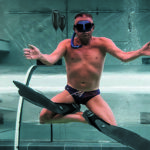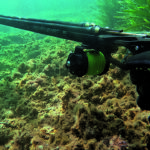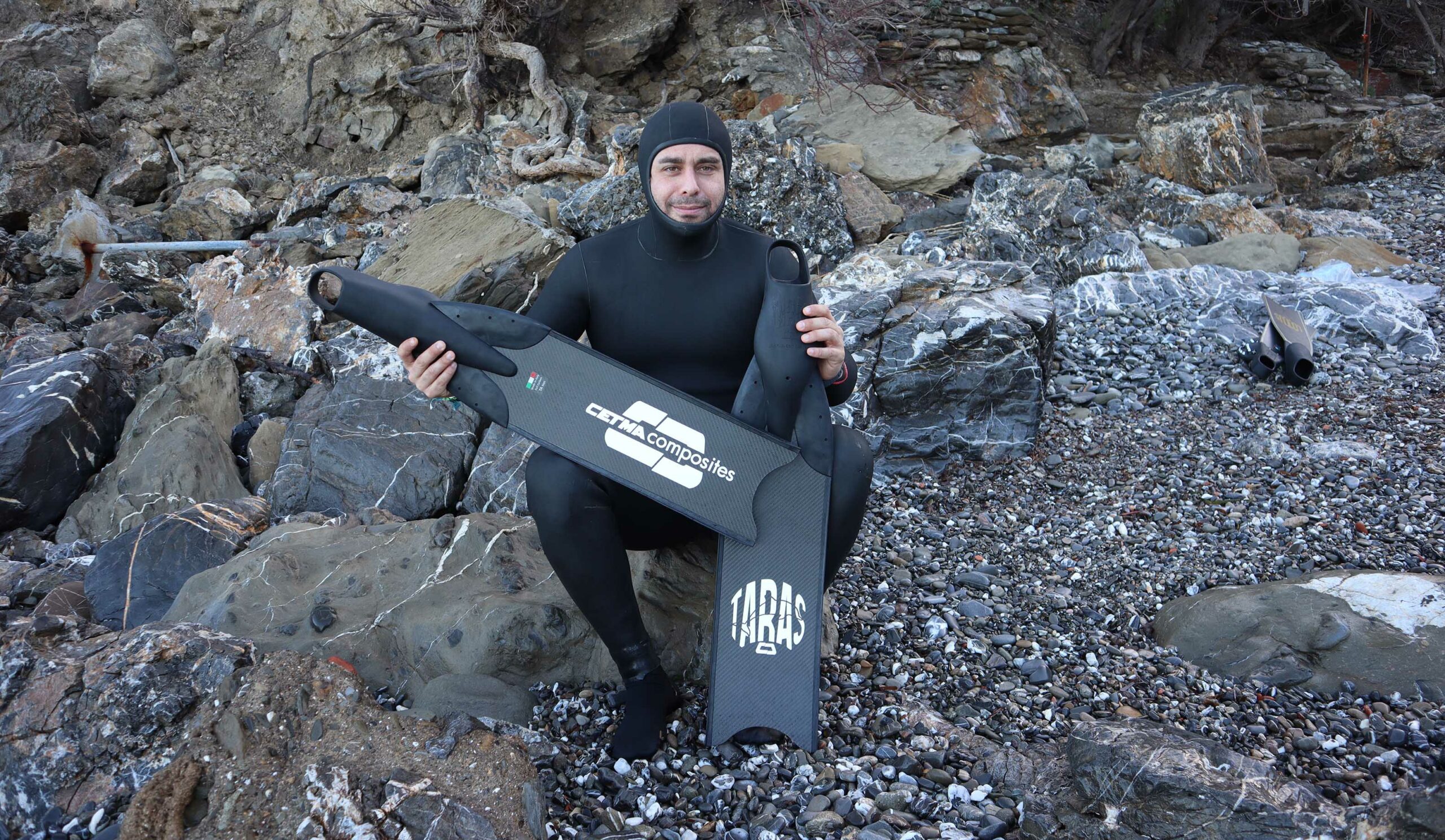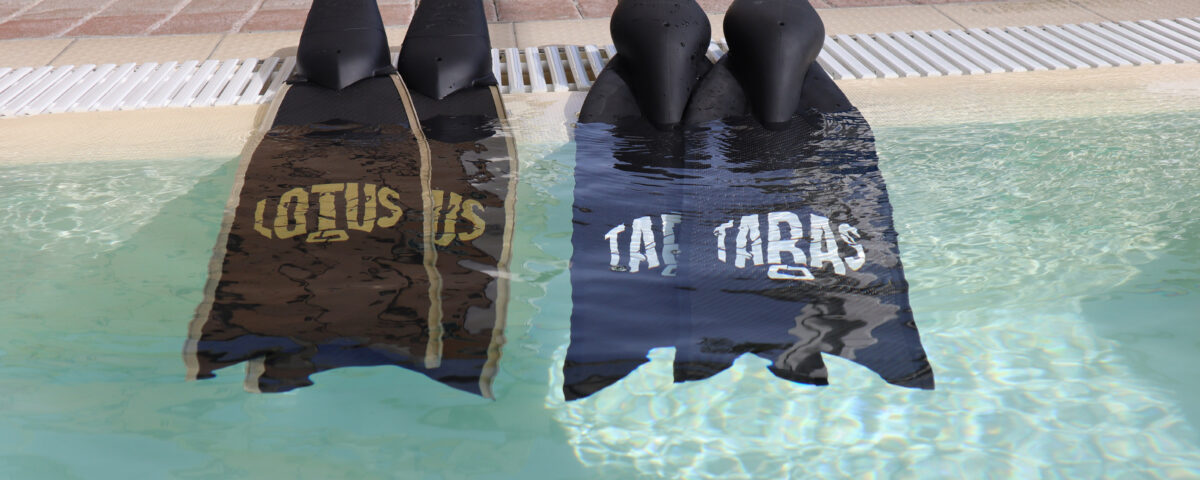CETMA COMPOSITES: Taras and Lotus Carbon the 2 custom-made fins!

Marco Mardollo, Mr. Y-40
6 May 2024
Salvimar: Ares Nightmare 95 Speargun
20 May 2024They represent the excellence of Cetma Composites, two models very different from each other in concept but both at the top of what the market offers. We tested them extensively at sea and in the pool, truly impressed performance
Filippo Carletti
We had the opportunity to test the two flagship models from Cetma Composites, the Taras and the Lotus Carbon, two fins very different from each other but both at the top of the market.
Let's start with the Taras.
The rounded lines and their soft shape evoke futuristic prototypes, the curves of luxury cars and planes, and last but not least, the water element. Just looking at them is a pleasure. The closed foot pocket somehow resembles the back of dolphins, their elegance, and aquatic nature. The blade is shorter than the more common models of Cetma Composites, the foot pocket is larger and visually more cumbersome. The blade and foot pocket seem to have been fused together never to part again. Once in hand, the fin surprises with the weight concentrated on the part of the fit, and you can't help but smile as your finger glides along the smooth, soft lines that transition from carbon to rubber. And certainly not just any rubber… So we head to the pool to test them dynamically and we start by crunching numbers. My average lap time over 25 meters is 21, 22 seconds per lap, which became a low 18 once the Taras were put on for the first time. Wearing and carrying them is certainly part of the game. The foot adheres very well to the foot pocket, which is why these fins are definitely for competition, but they are unlikely to be comfortable for an entire training session. But that's the price to pay if you want a custom-made… The kicking is interesting and peculiar, and it's fun to discover something more, lap after lap, as you would with a new sports car testing it on a track. The Taras demand a very narrow kick. Actually, they insist on it. In an instant, the sense of the heavier foot pocket becomes clear. In motion, when we are in position, the foot pockets find their center of gravity and stay there. A wider kick would easily tire the leg, but by working the ankles well, the fins push (definitely push!) almost without disturbing the larger leg muscles. The foot pocket perfectly transmits the effort to the blade, and I have the impression that its balance helps to maintain the streamline even during the glide phase. The width of the blade is also perfect, leaving a minimal margin that prevents the water rails from touching and wearing out between them. The angle of the blade and its intersection with the foot pocket almost make it feel like they have become part of your body, making the freediver and equipment one. At depth, the sensations do not change but intensify. The kicking here also seems already decided, narrow and rhythmic if you want to achieve speed, with the blade flexing in an S shape without ever creating that moment of stasis on the kick change typical of fins that require wider strokes. What surprises is the force that passes from the foot to the fin, without the slightest dispersion, with the blade not slipping and settling on invisible tracks, if possible correcting some imperfections in action. Mistaking technique and struggling with the Taras is certainly possible, but once you understand what the equipment is asking for, you immediately understand why some call them "the fins of records." There is no doubt that the top-of-the-range models from Cetma Composites manage to emphasize performance, taking it to another level, partly at the expense of comfort. Here, it is the freediver who listens to the fins, which command the movements, ensuring results of absolute level.
The Lotus Carbon fins are designed for depth diving. Taking them out of the box, backlighting reveals the V shapes on the blade, indicating the differentiated thickness of the composite. While with the Taras the feeling is of having a single body that merges with the leg, the Lotus Carbon allow for greater flexibility of use, with the blade being detachable from the foot pocket.
When held in hand, they come to life, with the carbon flexing and returning to position, then flexing again and undulating, as I turn them and study every detail. Yes, perhaps they vaguely resemble the Mantra. But they are clearly softer and more elastic, able to make the most of the DRS (Dynamic Resonance System).
Wave after wave, the sea continues to keep me out of the water, but curiosity gets the better of me, so to probe the initial sensations, I decide to take a plunge into the pool to test them dynamically. The fit is really comfortable. These are clearly fins that can be worn for entire workouts and sessions in the sea.
I prepare myself, take a good breath, dive, push off, and start. I don't feel them. That was my first thought. I try to vary the amplitude of the kick to understand more, and maybe I find the key. The Lotus Carbon make their presence felt by adopting kicks of reduced amplitude and high frequency. But the surprising fact is that the kick, whether wide or not, feeling the blade or not, propels. And a lot!
When we take them to depth, we realize their wide range of use. In fact, they are also suitable for a wider and more relaxed kicking, but they undoubtedly express their full potential when we ask for that something extra during the ascent. In this phase, by shortening the kick and managing the ankle well, we feel the blade working harder, precisely because of its ability to move more water with a tighter rhythm and a kick amplitude that keeps the legs in shape during descent and ascent.
They are definitely fins designed for depth, but the comfort of the foot pocket can make them suitable for fishing at challenging depths, for signaling, and for appearance, making ascents that even challenge the most trained leg easier.
I found that the Lotus Carbon "listen" very much to the kicking of those who wear them, performing at their best when the feeling between the freediver and the equipment solidifies, but still maintaining their efficiency even when we decide to vary the pace and adopt a different style.
After several sessions in the pool and just as many in the sea, I drew my conclusions. Taras and Lotus Carbon represent the evolution of the concept of kicking. If the Taras instruct the freediver on how they should be used, the Lotus Carbon follow the movements of the wearer, accompanying them in every movement, ready to perform at their best as soon as the need arises.
With these models, we move away from the concept of fins with strengths and weaknesses to enter the world of fins designed for a purpose: the Taras are undoubtedly born for competitions, just as the Lotus Carbon are faithful companions for depth diving.



